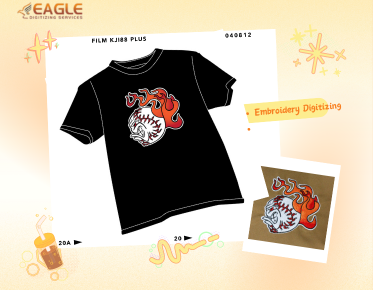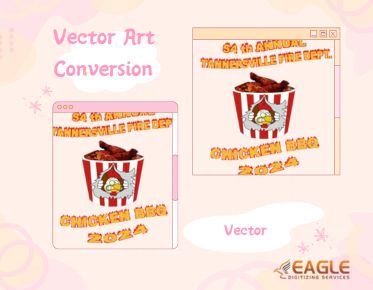Battle of the Prints: Comparing DTG Printing to Others
Textile printing is a diverse field, offering various methods for applying designs to fabrics. These techniques range from traditional screen printing to modern digital processes like DTG printing. Each method has its unique set of strengths and limitations, tailored to different needs and applications. Understanding these techniques helps in selecting the right approach for any printing project. If this post has aroused your curiosity about vector artwork services and you hope to gain more knowledge, reach out to us without hesitation.
Why Comparing Printing Methods Matters
Comparing different printing methods is crucial for making informed decisions based on specific needs. Factors such as print quality, cost, and production speed vary significantly between methods. By evaluating these factors, businesses can choose the most efficient and effective method for their particular projects, ensuring optimal results and cost-efficiency.
Comparing Print Quality
DTG Printing: High-Resolution and Color Accuracy
DTG printing is renowned for its high-resolution output and color accuracy. It can reproduce intricate details and gradients with exceptional clarity, making it ideal for designs requiring fine detail and rich color.
Screen Printing: Vibrancy and Durability
Screen printing produces vibrant colors and is known for its durability, especially on larger runs. The method’s thick layers of ink create a substantial, long-lasting print that stands up well to washing and wear.
Heat Transfer Printing: Image Transfer and Detail
Heat transfer printing delivers good image detail and color reproduction. However, the quality can vary based on the type of transfer used and the fabric’s compatibility. Transfers may feel less integrated with the fabric and can affect the garment's feel.
Sublimation Printing: Full-Color Brilliance and Longevity
Sublimation printing offers unparalleled color brilliance and longevity. The dye becomes part of the fabric, ensuring that prints are vibrant and durable, with no risk of peeling or fading. The process is ideal for designs requiring full-color coverage and long-lasting quality.
Cost Analysis
Initial Setup Costs for DTG vs. Other Methods
DTG printing typically involves a higher initial investment due to the cost of the printer and associated equipment. In contrast, screen printing may have lower initial costs but requires additional setup for each color. Heat transfer and sublimation printing also involve specific equipment costs, with heat transfer being more affordable initially.
Production Costs and Per-Item Expenses
DTG printing has variable production costs based on the complexity of the design and the number of items. Screen printing becomes cost-effective for larger runs due to its economies of scale. Heat transfer and sublimation printing have costs related to materials and setup, which can vary depending on the order size.
Cost Efficiency for Small vs. Large Orders
For small orders, DTG printing and heat transfer are more cost-effective due to their lower setup costs. For large volumes, screen printing offers better cost efficiency due to reduced per-unit costs. Sublimation is cost-efficient for large orders on polyester fabrics but is limited by fabric compatibility.
Production Speed and Efficiency
DTG Printing: Turnaround Times for Custom Orders
DTG printing offers fast turnaround times, making it ideal for custom and on-demand orders. The process involves minimal setup and can quickly produce high-quality prints, catering to urgent or small batch needs.
Screen Printing: Production Speed for Bulk Runs
Screen printing is efficient for large-scale production, with the ability to handle high volumes quickly once the screens are set up. However, the setup process can be time-consuming, making it less suitable for small or custom orders.
Heat Transfer Printing: Efficiency and Setup Time
Heat transfer printing is relatively quick to set up and can efficiently handle both small and medium-sized orders. The process is straightforward, but the efficiency can vary depending on the complexity of the design and the type of transfer used.
Sublimation Printing: Speed and Workflow
Sublimation printing provides fast production speeds, particularly for large runs of polyester items. The workflow is efficient, with quick setup times and the ability to produce vibrant, long-lasting prints.
Material Compatibility
Best Fabrics for DTG Printing
DTG printing works best on 100% cotton fabrics, which absorb ink effectively and yield vibrant colors. Cotton blends and polyester can also be used but may require additional pre-treatment for optimal results.
Materials Suited for Screen Printing
Screen printing is versatile and can be used on a wide range of materials, including cotton, polyester, and blends. The method is particularly effective on fabrics with a smooth surface, which allows for clean ink application.
Ideal Surfaces for Heat Transfer Printing
Heat transfer printing is suitable for a variety of surfaces, including cotton, polyester, and synthetic fabrics. The choice of transfer material and heat press settings can influence the final result and fabric compatibility.
Fabric Requirements for Sublimation Printing
Sublimation printing requires polyester or polymer-coated fabrics, as the dye needs to bond with synthetic fibers. Natural fibers like cotton are not suitable for sublimation, as the dye cannot penetrate the fabric.
Design Flexibility
DTG Printing: Complex and Detailed Designs
DTG printing excels at handling complex, multi-color designs with fine details. It allows for high-resolution images and intricate patterns, making it ideal for designs that require precision and depth.
Screen Printing: Color Limitations and Multi-Color Designs
Screen printing is limited in handling multi-color designs due to the need for separate screens for each color. While it can produce vibrant and solid colors, the method is less flexible for designs with intricate details and gradients.
Heat Transfer Printing: Customization Options
Heat transfer printing offers flexibility for customizing designs, with the ability to print full-color images and patterns. However, the method may be limited by the type of transfer material and its compatibility with different fabrics.
Sublimation Printing: Full-Color Designs and Limitations
Sublimation printing supports full-color designs with exceptional vibrancy. However, it is limited to polyester fabrics and cannot handle designs requiring high levels of detail or complex color blending on natural fibers.
Durability and Longevity
How DTG Prints Hold Up Over Time
DTG prints are durable and resistant to fading, but their longevity depends on fabric quality and proper care. Prints may soften or degrade over time with frequent washing if not properly treated.
Durability of Screen Printed Designs
Screen-printed designs are known for their durability and resistance to washing and wear. The thick layers of ink create a robust print that can withstand frequent use and laundering.
Longevity of Heat Transfers and Their Performance
Heat transfers can vary in durability based on the quality of the transfer material and the application process. Over time, transfers may peel or crack, especially if not applied correctly or if the garment is subjected to harsh conditions.
Durability of Sublimated Prints
Sublimated prints are highly durable, as the dye becomes part of the fabric. These prints are resistant to fading, peeling, and cracking, making them ideal for items subjected to regular wear and washing.
Environmental Impact
Eco-Friendliness of DTG Printing
DTG printing is considered environmentally friendly due to its use of water-based inks, which produce fewer volatile organic compounds (VOCs). However, the environmental impact also depends on factors such as energy consumption and waste management.
Environmental Considerations for Screen Printing
Screen printing can be less eco-friendly due to the use of solvent-based inks and the production of waste materials. Efforts to reduce environmental impact include using eco-friendly inks and improving waste management practices.
Heat Transfer Printing and Environmental Concerns
Heat transfer printing involves the use of transfer materials and adhesives, which can contribute to environmental concerns. The impact varies depending on the type of materials used and the disposal methods for waste products.
Sublimation Printing’s Impact on the Environment
Sublimation printing generally has a lower environmental impact compared to methods using solvent-based inks. The process is efficient and produces minimal waste, but the use of specific dyes and polyester fabrics can still pose environmental considerations.
Setup and Maintenance
Setting Up a DTG Printing Operation
Setting up a DTG printing operation involves investing in specialized equipment, such as DTG printers and pre-treatment machines. Proper setup includes configuring the printer, maintaining a clean workspace, and ensuring adequate ventilation for ink curing.
Screen Printing Setup and Maintenance Needs
Screen printing requires setting up screens, preparing inks, and ensuring proper alignment for each print. Regular maintenance includes cleaning screens, checking ink consistency, and calibrating equipment to maintain print quality.
Heat Transfer Printing Equipment and Upkeep
Heat transfer printing involves using heat presses and transfer materials. Equipment maintenance includes regular cleaning of heat press plates, monitoring temperature settings, and ensuring proper storage of transfer materials.
Maintaining Sublimation Printing Systems
Sublimation printing systems require the maintenance of printers, heat presses, and transfer papers. Regular upkeep includes cleaning print heads, checking ink levels, and ensuring proper alignment of transfer paper and fabric.
Order Volume and Scalability
DTG Printing: Best for Custom and Small Orders
DTG printing is ideal for custom and small orders due to its quick setup and ability to print intricate designs. It allows for on-demand production without the need for large inventory or setup costs.
Screen Printing: Efficient for Large Volume Runs
Screen printing is best suited for large volume runs, where the setup costs are spread over many items. The method’s efficiency in handling high volumes makes it cost-effective for bulk production.
Heat Transfer Printing: Flexibility for Various Orders
Heat transfer printing offers flexibility for various order sizes, from small batches to medium volumes. Its adaptability makes it suitable for custom orders and promotional items with varied design requirements.
Sublimation Printing: Volume Capabilities and Efficiency
Sublimation printing is efficient for medium to large orders, particularly for polyester items. Its ability to produce vibrant, long-lasting prints quickly makes it a good option for bulk production, provided the fabric requirements are met.
Quality Control and Troubleshooting
Ensuring Consistent Quality with DTG Printing
Ensuring consistent quality in DTG printing involves regular calibration of the printer, maintaining proper ink levels, and using high-quality pre-treatment solutions. Monitoring print settings and performing routine maintenance helps maintain print accuracy and durability.
Common Issues and Fixes in Screen Printing
Common issues in screen printing include color mismatches, ink bleeding, and misalignment. Fixes involve adjusting screen tension, using appropriate ink formulations, and carefully aligning screens for each print.
Troubleshooting Heat Transfer Printing Problems
Heat transfer printing problems may include poor adhesion, incomplete transfers, and image distortions. Troubleshooting involves checking heat press settings, ensuring proper application of transfer materials, and using compatible fabrics.
Addressing Challenges in Sublimation Printing
Sublimation printing challenges include color variations, incomplete transfers, and fabric compatibility issues. Addressing these challenges involves adjusting printer settings, ensuring proper heat and pressure application, and selecting appropriate fabrics for the process. For the premier online vector conversion, feel free to connect with us.
Each printing method has its unique strengths: DTG for high-resolution, custom designs; screen printing for cost-effective bulk runs; heat transfer for versatile customization; and sublimation for vibrant, durable prints on polyester. Understanding these differences helps in selecting the best method for your needs.
To make an informed decision, consider all relevant factors—print quality, cost, speed, and environmental impact. Assess your project’s requirements and choose the method that aligns with your goals, ensuring the best possible outcome for your printing endeavors.


.png)
